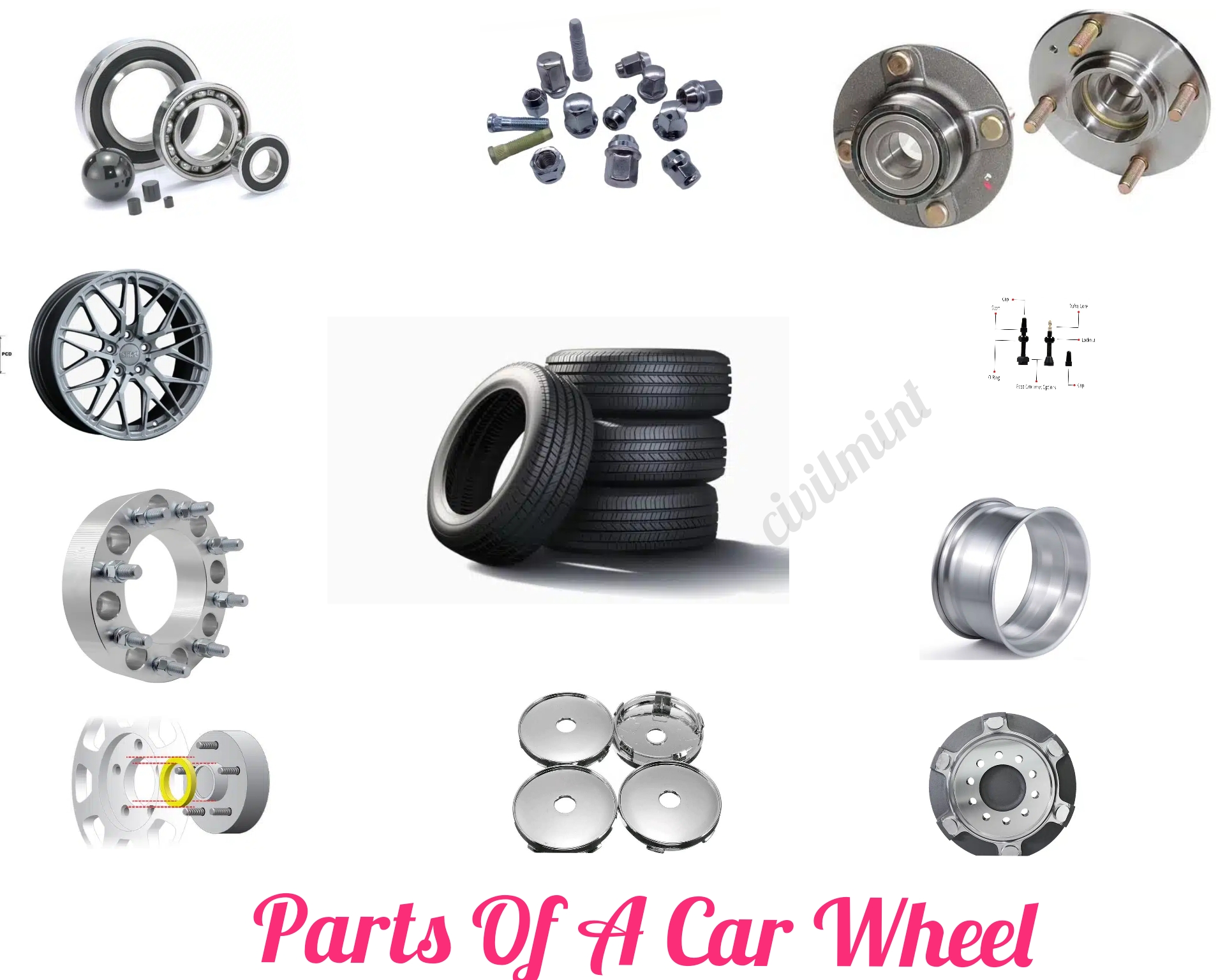Table of Contents
Introduction
A car wheel is an important component that plays a vital role in the performance and safety of a vehicle. Consisting of many complex parts, each element of a car wheel serves a specific purpose, contributing to the vehicle’s overall functionality and stability.
In this article, we shall discuss in detail the various essential components that make up the wheel of a car, exploring their functions and importance in ensuring a smooth and safe driving experience.
Parts Of A Car Wheel And Their Functions
I have described all the parts of a car wheel. Let’s know all the parts of a car wheel.
1. Lug Hole:
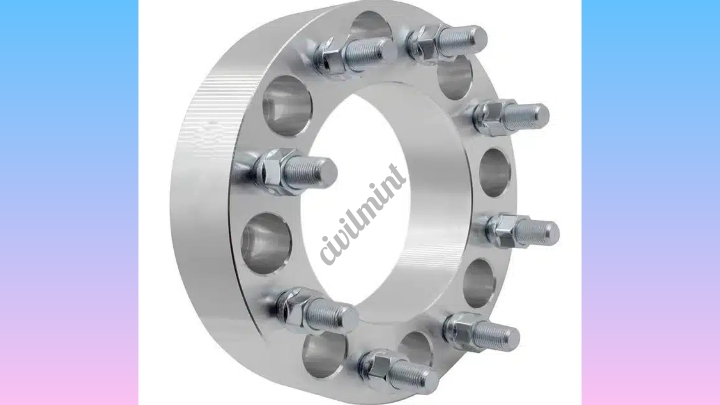
Lug holes, located on the center disc of a wheel, serve a pivotal role in securing the wheel to the axle. These holes are arranged in a circular pattern, forming what is known as a bolt circle. Lug nuts, designed to fit into these holes, play a crucial role in maintaining the connection between the wheel hub and the threaded wheel studs. By fastening the lug nuts onto the threaded wheel studs, the wheel hub is secured in place, ensuring proper alignment and centering of the wheel on the axle.
2. Center Bore:
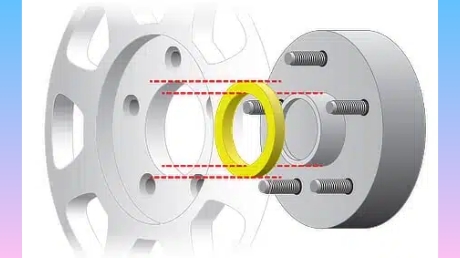
The center bore of a wheel is a machined hole positioned at the center of the wheel. This seemingly small component plays a significant role in ensuring the proper alignment and centering of the wheel on a vehicle’s axle. When the center bore of a wheel matches the hub collar diameter of the axle, it ensures hub-centricity. Hub-centric wheels reduce the likelihood of vibrations and contribute to a smoother ride. Proper hub-centricity is essential to support the vehicle’s weight and maintain stability.
3. Center Cap:

Center caps, often found in the center of the wheel, serve both functional and aesthetic purposes. These caps provide protection to the wheel rims and tires, shielding them from dirt, debris, and the elements. In addition to their protective role, center caps also contribute to the overall appearance of the wheel. Some center caps are designed to be removable, allowing access to wheel components such as lug nuts or hub mechanisms. However, many wheel rims are designed without removable center caps for added simplicity and durability.
4. Flanges:
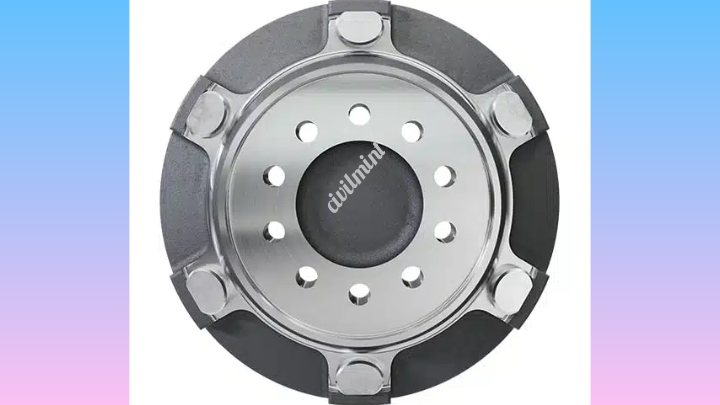
Wheel flanges, located on the sides of a wheel, play a critical role in ensuring the stability and integrity of the wheel-to-axle connection. These flanges are mechanically connected to either the drive axle or the spindle’s end, depending on the specific vehicle design. By preventing unnecessary tire slipping, flanges contribute to safe and reliable vehicle operation. They play a vital role in maintaining proper alignment and reducing the risk of accidents or damage caused by wheel misalignment.
5. Barrel:
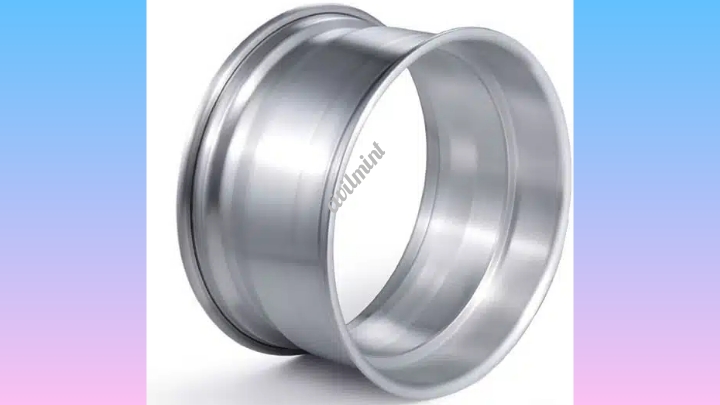
The barrel of a car wheel is the section located between the outer face and the inlet rim edge. This area serves as a crucial attachment point for the tire. The design and dimensions of the barrel influence the overall characteristics of the wheel, including its strength and fitment with tires. One significant feature of the barrel is the drop center, which determines the type of mount wheel. In vehicles with front-wheel drive, the drop center is located near the front of the wheel, while rear-wheel-drive vehicles have drop centers positioned near the back of the wheel.
6. Valve System:

The valve system in car tires is responsible for controlling the inflation and deflation of the tires. This system includes a valve mechanism that is connected to the tire pressure monitoring system. The valve stem, often made of rubber, is the component that protrudes from the tire and can be accessed to add or release air. The integration of the valve system with the tire pressure monitoring system allows drivers to monitor tire pressure in real time, promoting safe driving conditions and optimal tire performance.
7. Wheel Fasteners:
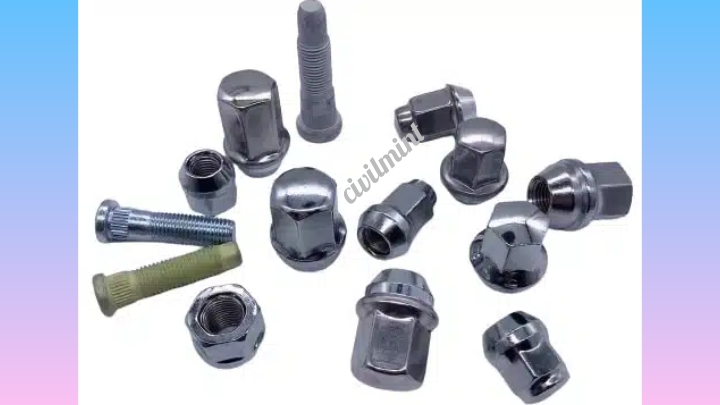
Wheel fasteners are integral components that play a crucial role in maintaining the secure connection between the wheel and the vehicle’s axle flange. These fasteners, often in the form of threaded bolts or studs, are pressed into the hub or axle flange. Their design and placement ensure that the wheel remains securely attached to the vehicle, even under various driving conditions. Additionally, some wheel fasteners incorporate a sensitive region on the back of the stud, which interfaces with the hub or axle metal to prevent the stud from becoming loose.
8. Wheel Rims:

Wheel rims, also known as wheel discs, are essential components that serve as the interface between the hub and the tire. The tire is mounted onto the rim, which is then connected to the hub using various fasteners, such as lug nuts and bolts. Wheel rims are often constructed from stamped steel, a process that involves shaping and welding to achieve the final form. The central section of the rim features wheel mounting holes, and in some cases, additional stamping is utilized to secure wheel covers, enhancing the wheel’s aesthetics.
9. Wheel Hub:

The wheel hub is a central component that plays a critical role in the functionality of a vehicle’s wheels. It serves as the connecting point between the rim and the axle. Housed within the wheel hub are important brake components such as brake pads, calipers, and rotors. Additionally, the wheel hub is directly linked to the axle, allowing the vehicle to both move and come to a stop efficiently. The hub’s connection to the tires is achieved through the use of lug nuts and bolts, providing a secure attachment that supports the wheel’s mechanics.
10. Tires:
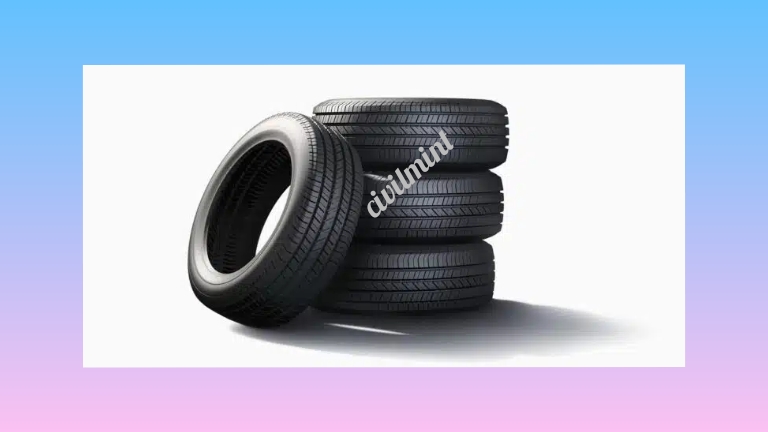
Tires are among the most fundamental components of a vehicle, serving multiple crucial functions. They support the weight of the vehicle, absorb impacts from road shocks, and transmit essential forces such as traction, torque, and braking to the road surface. Constructed from flexible rubber and inflated with compressed air, tires are an integral part of the suspension system. Their flexible nature allows them to adapt to varying road conditions while maintaining a comfortable and safe ride for occupants. Additionally, tires act as protective covers, preventing direct contact between the wheel rims and the ground.
11. Wheel Bearings:
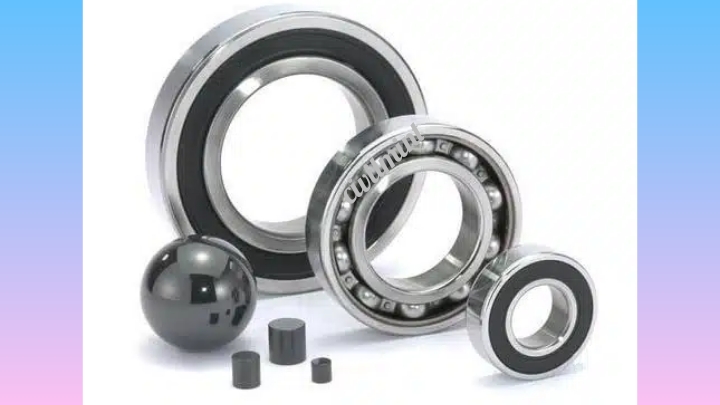
Wheel bearings are essential components that facilitate the smooth and efficient rotation of a vehicle’s wheels. They form a low-friction connection between the rotating wheels and the stationary vehicle body. Wheel bearings are typically composed of three main sections: the inner race, the rolling elements, and the outer race. These components work together to minimize friction and enable the wheels to rotate freely. Bearing cages are used to separate and guide the individual rolling elements, ensuring their proper alignment. Moreover, wheel bearings are equipped with seals or shields that help retain lubrication inside the bearing while preventing contaminants such as dirt and water from entering, thus extending the lifespan of the bearings.
Wrapping Up
The components of a car wheel are vital to the functioning of an automobile. These circular mechanisms generate rotary motion, which helps vehicles move from one point to another. The strength of the wheels is important to withstand the forces during operation, the lightweight design is maintained to reduce spring weight.
You might also like: Symptoms Of A Bad Car Battery
Additionally, tires act as a cushion, absorbing road shock and providing friction for general handling. Modern tires are made from a variety of materials, primarily synthetic rubber compounds. These elements collectively contribute to the overall performance, safety and efficiency of the vehicles.

